Once again, happy Monday to all and #TGIM! I always look forward to Mondays because they are my #52Chances a year, in which I can share Memories of My Mom with all of you!

September is National Americana Month – a time to reflect on and reminisce about the “Norman Rockwell basics” of life in America; those simple things that have uniquely woven us together as Americans! When I think of Americana, in terms of food-related, I think of the nostalgic icons of fast-food chains, state fairs, carnivals, and drive-ins. Even department store restaurants and cafeterias make the reminiscing list for me (and I’ll be writing more about them next week)!
Fast-food is a multi-billion dollar industry. If you like hot dogs, hamburgers, cheeseburgers, milkshakes, French fries, onion rings, tacos, burritos, pizza, fried chicken, and deep-fried fish – even breakfast foods – they are all among the most popular “fast-food” menu offerings, as well as the most popular consumer choices around America. The fast-food industry has been evolving for over 100 years – the prime of which is considered to have been during the 1960s and 1970s; as so many franchises launched across the country, it was like a “baby boom” in the food industry. Soon after, American fast-food franchising grew globally, as well.
The more critics argued about how bad fast food and junk food was for our health and well-being, the more people wanted to covet it. Mom always contended that “fast food” was food that was prepared quickly and that was done at fine restaurants such as Devon Gables’ Tea Room, as well as fast-food chains like McDonald’s. Mom would also maintain that “junk food” was merely food that was poorly prepared.
Additionally, as Mom said in her last cookbook, “…fast food has carried a reputation, by default, of containing ingredients that are harmful to us. Yet, they contain the same ingredients as those foods served in the ‘finer’ restaurants with wine stewards, linen tablecloths, candlelight, coat-check attendants, and parking valets; which separate the plastic palaces of fast food from the expensive dining establishments. One ‘eats’ at McDonald’s, but ‘dines’ at The Four Seasons. Steak and potato or hamburger and French fries – the ingredients are practically the same. How they are prepared [and presented] makes the difference!” – [As seen in Gloria Pitzer’s Cookbook – The Best of the Recipe Detective (Balboa Press; Jan. 2018, p. 6).]
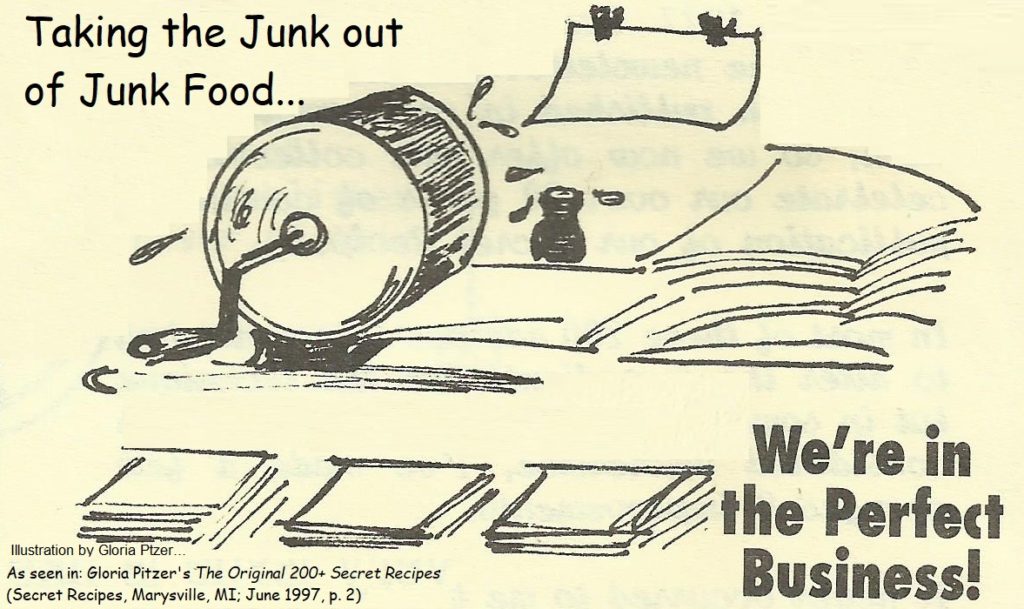
FROM MOM’S MEMORIES…
As seen in…
Gloria Pitzer’s Cookbook – The Best of the Recipe Detective (Balboa Press; Jan. 2018, pp. 70 & 71)
SMORGASBORD – FREEDOM OF CHOICE
It’s a mistake to think of the fast food industry as being confined to hamburgers and fries and buckets of chicken or fish. It is really a more versatile banquet of menu selections than the critics give us time to consider. The public is fickle and very easily swayed by the aggressive opinions of self-styled experts who preach the evils of fast food with all the charisma of a revival tent evangelism; and we, the believing public, will go in whatever direction the wind blows the strongest!
Nobody dreamed that the step-child of the food industry would ever have endured this long – for, to everybody’s surprise, fast food has, indeed, become the ‘Liza Doolittle’ of the restaurant industry. The humble streetcar diner of the 1950s and 1960s has blossomed into the Cinderella of the commercial dining division of the food industry. It has soared in sales while all other major enterprises have suffered set-backs in the shadow of the recent economic gloom! [NOTE: That was originally written in 1982, showing that history surely does repeat itself.]

The reason the fast food industry has become a virtual smorgasbord of appealing menu selections is that it is affordable! People who work hard for their money and have little of it left after essentials have been paid for, look for leisure and escape hatches by which they can derive a little pleasure for the money they have left to spend on such luxuries.
Fast food chains cater to crowds with very little fuss, but surroundings that reflect informality. The costs of eating out, however, have increased along with everything else. Now it’s becoming less and less appealing to spend the same money on one fast food meal that would also buy a bag of groceries that could make several meals at home!
So, we can have our cake and eat it too! We can dine in as if we’re eating out – whether we choose to be catered to by wine stewards and parking valets or whether we wish to impersonate the plastic palaces of the fast food kingdom – eating out at home can be a pleasant experience.
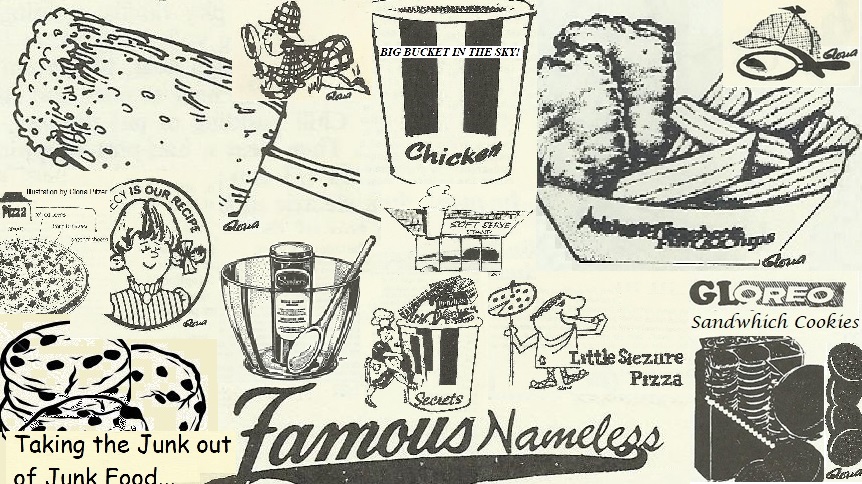
SECOND THOUGHTS
FAST FOODS HAVE ARRIVED IN OUR CULTURE at a point in our growth as a society, when ‘time’ is of the essence… held cheaply, spent foolishly, and made to be one of the most aggressive influences in our lives.
The calendar and the clock have given a sense of order to civilization. Our lives are, both, governed by and regulated by the limitations of these two man-made inventions. In a world created and perpetuated by an infinite Spirit, man has adjusted to the divisions of time. The records of one’s birth and death are accounted for by date and moment; and all the time in between is categorized by years, months, weeks, days, hours, moments—even seconds. We are hardly conscious of the limitations to which we submit ourselves by confining our lives to the measurements of calendar and clock divisions.
Without even realizing it, we are constantly meeting deadlines in our lives. We catch a bus, a train, a plane in accordance with the hour and minute scheduled. We compete in and watch sports that honor seconds by which winning and losing, and records are determined.
It is, with some frustration, that man attempts to occasionally free himself of the obligation to live within the framework of the deadline. Our work is subject to how much we can accomplish within a repeating allotment of time. Our leisure is limited by the number of hours and minutes that remain.

Even the successful results of the foods we prepare is completely dependent on the timing we employ. From this, we have derived ‘instant coffee’, ‘the 3-minute egg’, ‘day-old bread’, ‘Minute Rice’, ‘Hour-by-Hour’ deodorant soap, ‘the 5-minute phone call’, ‘the 12 Days of Christmas’, and on and on. We can have a ‘good time’, a ‘great time’, a ‘bad time’. About the only thing not governed by, nor subject to, time is love.
So, ‘Fast Foods’ arrived when it could be most appreciated and most recognized. ‘Fast’ indicates – or, at least, implies – that there will be time left over one would not ordinarily have with food that was NOT ‘fast’. Most food preparations require a lot of time.
But ‘Fast Food’ was capitalized on by the promotional people as being something the on-the-go generation could enjoy and would buy, because they had better things to do than sit around restaurants waiting to be waited on; when, instead, they could run in and out with a meal and be on their way to the fun things in life – or on the way to the more time-consuming things in their life, such as work or business of one kind or another.
With the extensive research into the effects of stress, pressure put upon many people from having too little ‘time’ to be relaxed, to enjoy leisure, freedom from worries, there has been a turn-around in the fast food promotional field. Now they are gradually – without you hardly even being aware of it – changing to a ‘family’ restaurant theme. They want to bring back the old-fashioned, close-knit, solid family unit. Back and forth, like the pendulum of a clock, the gimmicks are given a new face and flavor. The public will eventually become conditioned to the new theme and ‘fast food’ will take on a cosmetic change that we will hardly even notice.

Continuing on with my depiction of 30 of the oldest fast food chains and restaurant franchises in America, which I started a couple of weeks ago; the following 11 chains emerged between 1953 and 1969, many from whom Mom imitated several of their popular menu offerings.
I’ve shared some of those recipes in previous blog posts so I’m re-sharing them, here, again. A few of the other recipes pictured below came from Mom’s last cookbook, Gloria Pitzer’s Cookbook – The Best of the Recipe Detective, which is a rewrite I helped her do of her favorite self-published cookbook from 1982, Gloria Pitzer’s Better Cookery Cookbook. A total of 12 of Mom’s related copycat recipes are pictured below. Enjoy!
[NOTE: For a little piece of Americana, hard copies of Mom’s last cookbook are available, for sale, at $20.99 each through the publisher, Balboa Press, at https://www.balboapress.com/Bookstore/BookDetail.aspx?BookId=SKU-001062252; eBooks are also available for $3.99 at https://www.balboapress.com/Bookstore/BookDetail.aspx?BookId=SKU-001062253.]

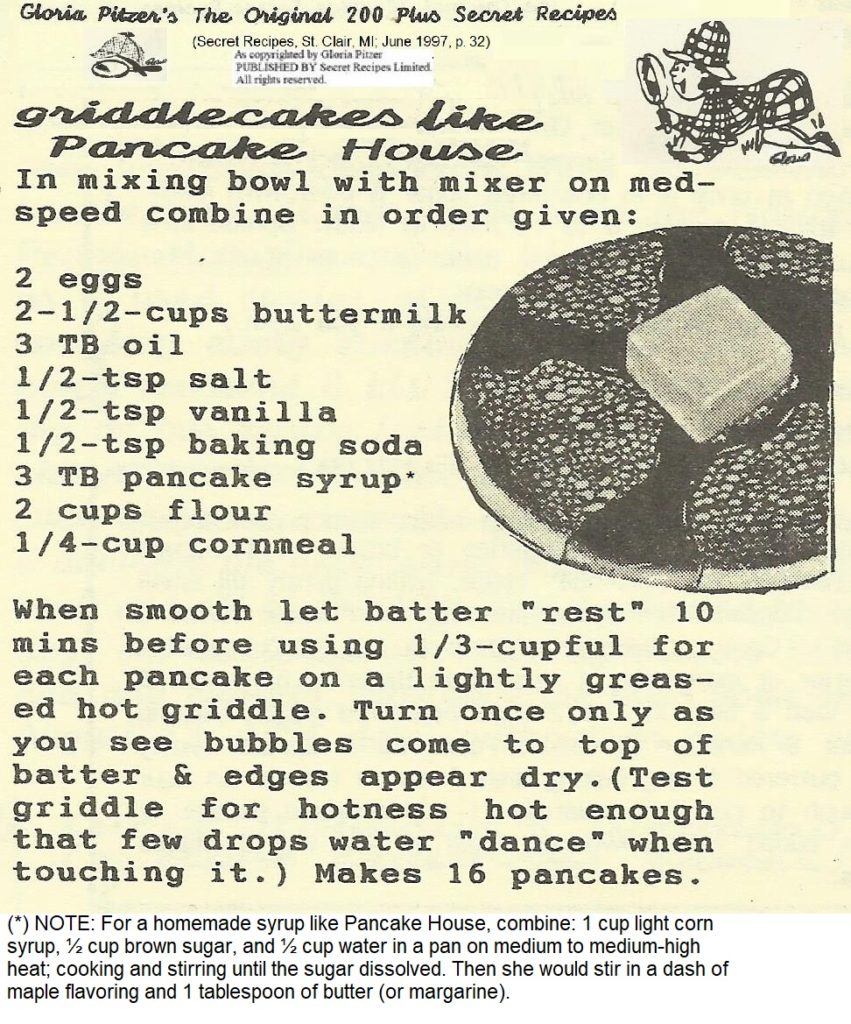
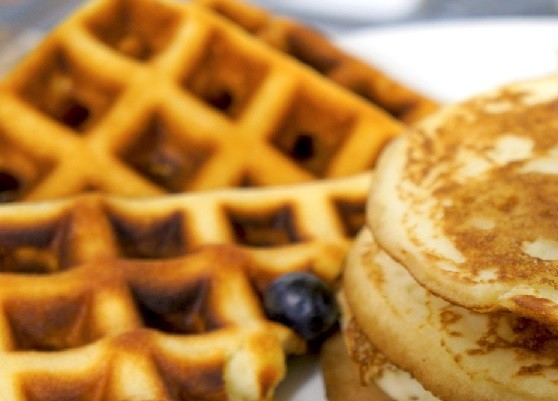

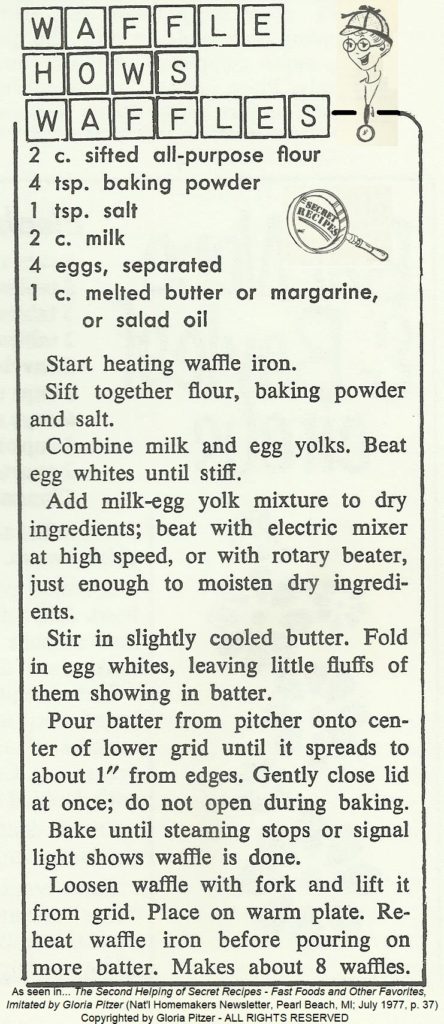
Italian-American cuisine was one of many of Mom’s favorite food areas to investigate. She “covered” many “hits” from the older, popular chains such as Pizza Hut and Little Caesar’s; as well as newer chains, like Olive Garden, for an example.


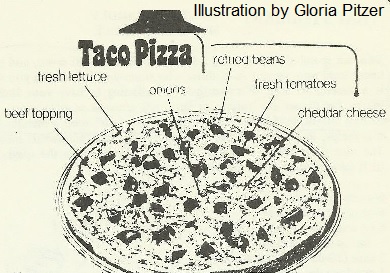
MORE FROM MOM’S MEMORIES…
As seen in…
Gloria Pitzer’s Cookbook – The Best of the Recipe Detective (Balboa Press; Jan. 2018, p. 72)
PIZZA AND PASTA DISHES
ITALIAN CUISINE has been a part of our American restaurant industry since the early days of its discovery – if you recall – by an Italian, Columbus! If Christopher Columbus had never tasted pizza or spaghetti with meatballs, then he surely didn’t know what he was missing! But the influence of good Italian cooking in our American ‘Melting-Pot’ cuisine has had a long life of appealing dishes that have influenced, still, other food creations.
The pizza, as we know it in this country, was the creation of an Italian baker in New York’s East side during the late 1800’s. Dock-workers and sailors frequented the bakery for their lunch food, requesting a slice of cheese with their bread and glass of ‘Vino’. The enterprising baker dreamed up what was probably the very first delicatessen in the restaurant industry.
WHEN THE CUSTOMERS REQUESTED bread and cheese, he also added some spicy tomato sauce to it, like an open-face sandwich; and, as the popularity of the dish grew, he topped it off with sausage and other condiments until someone asked him what he called his dish. He thought a moment and replied, ‘Pizza!’
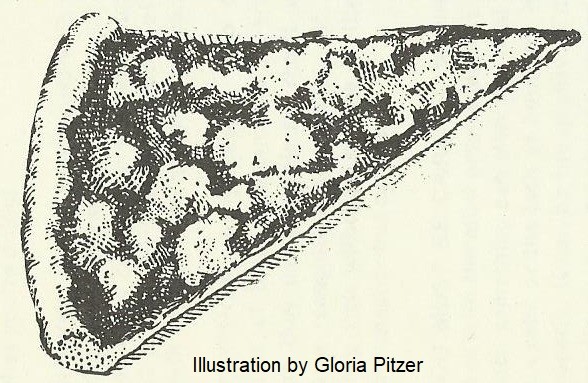
It came from the same word as the musical term, pizzicato, to pinch or pluck a stringed instrument, such as a violin or guitar. Thus, pizza may have been so-named from the fact that the dough, being rounded at first, is pinched and plucked outward until circular and flat.
For whatever reasons, the Italian baker went without recognition for his creation until we were informed by a woman, in her 80’s, that her father and his before him worked the docks in New York where the legend of the beginning of the pizza was a well-known story, handed down from generation to generation, that the dish was, indeed, created in this country and preserved with Italian traditions for all of us to enjoy.
The pasta dishes of our American restaurant cuisine have been expanded to include some very interesting creations, employing imagination when combining compatible ingredients. Although there are probably as many recipes for good sauces as there are cooks to prepare them and restaurants to serve them, I chose only a few for this book that would offer a good, basic dish.
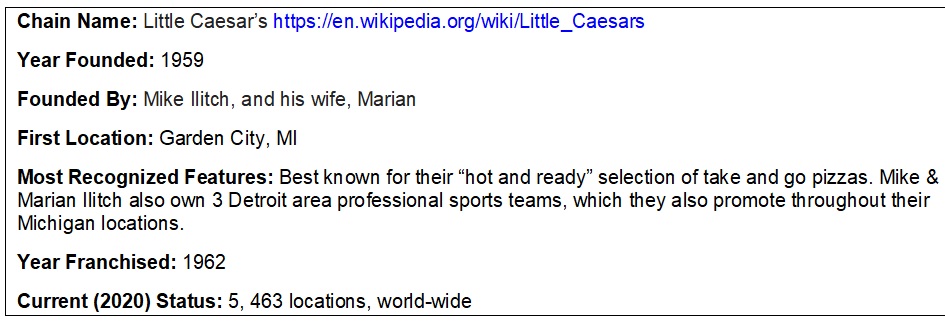

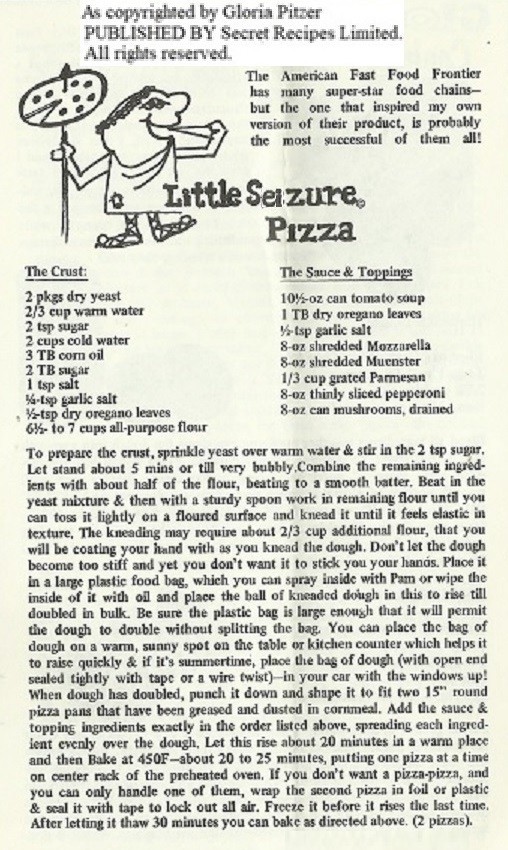
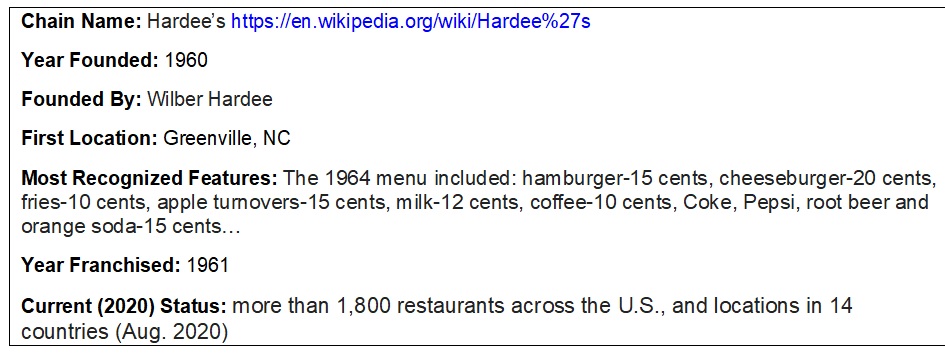



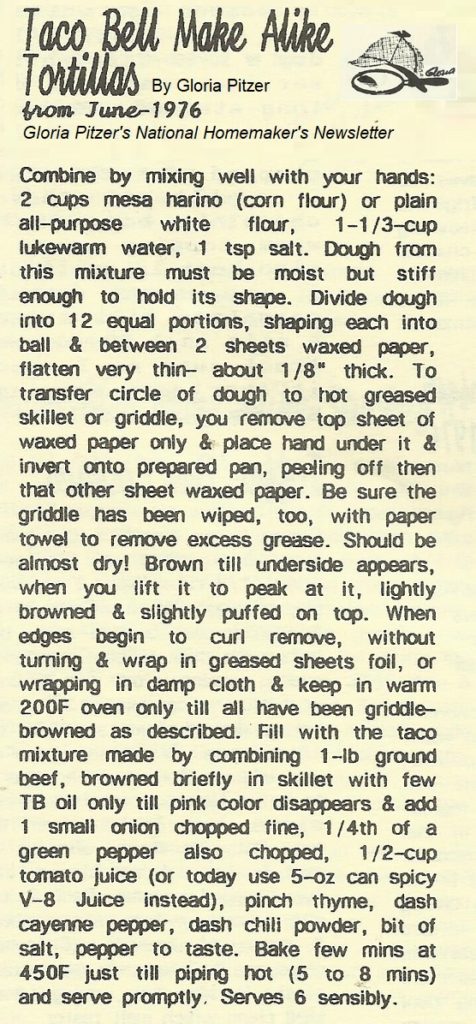

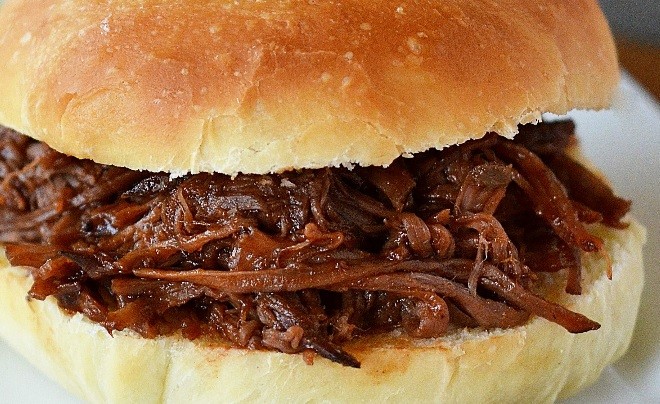
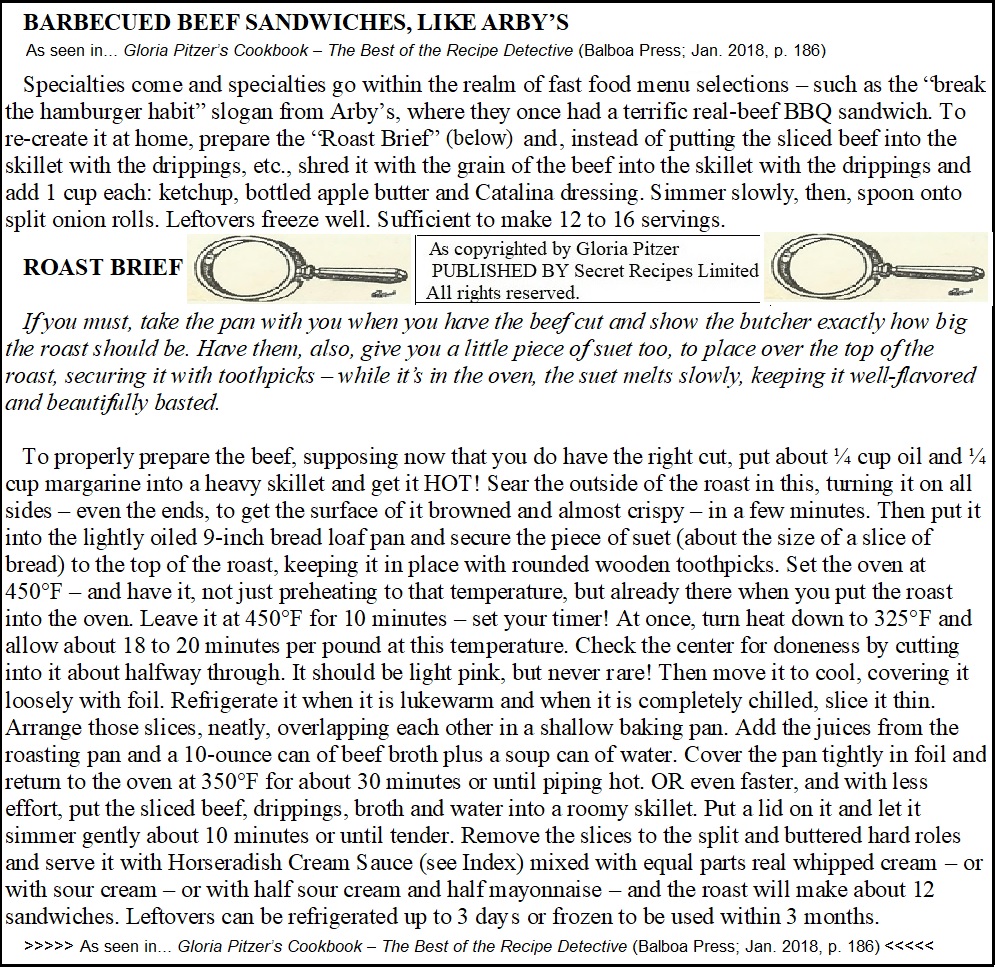

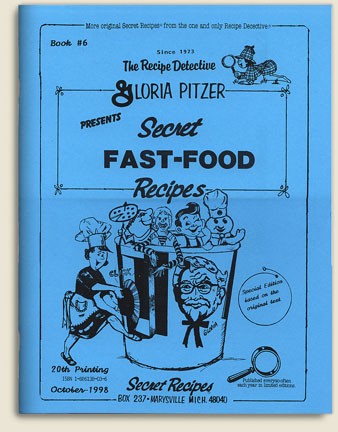
In Mom’s 1998 reprint of her self-published cookbook, Secret Fast Food Recipes (aka: “Book 6”, in a series), she published her delicious imitation of TGI Friday’s Crazy Layer Cake; which I will share with you at a later date.

When it came to deep-fried, battered fish, Arthur Treacher’s establishments did it best and they were always our family’s favorite! Mom’s version, called Archer Teacher’s Fish & Chips, was among her “Original 200” collection.

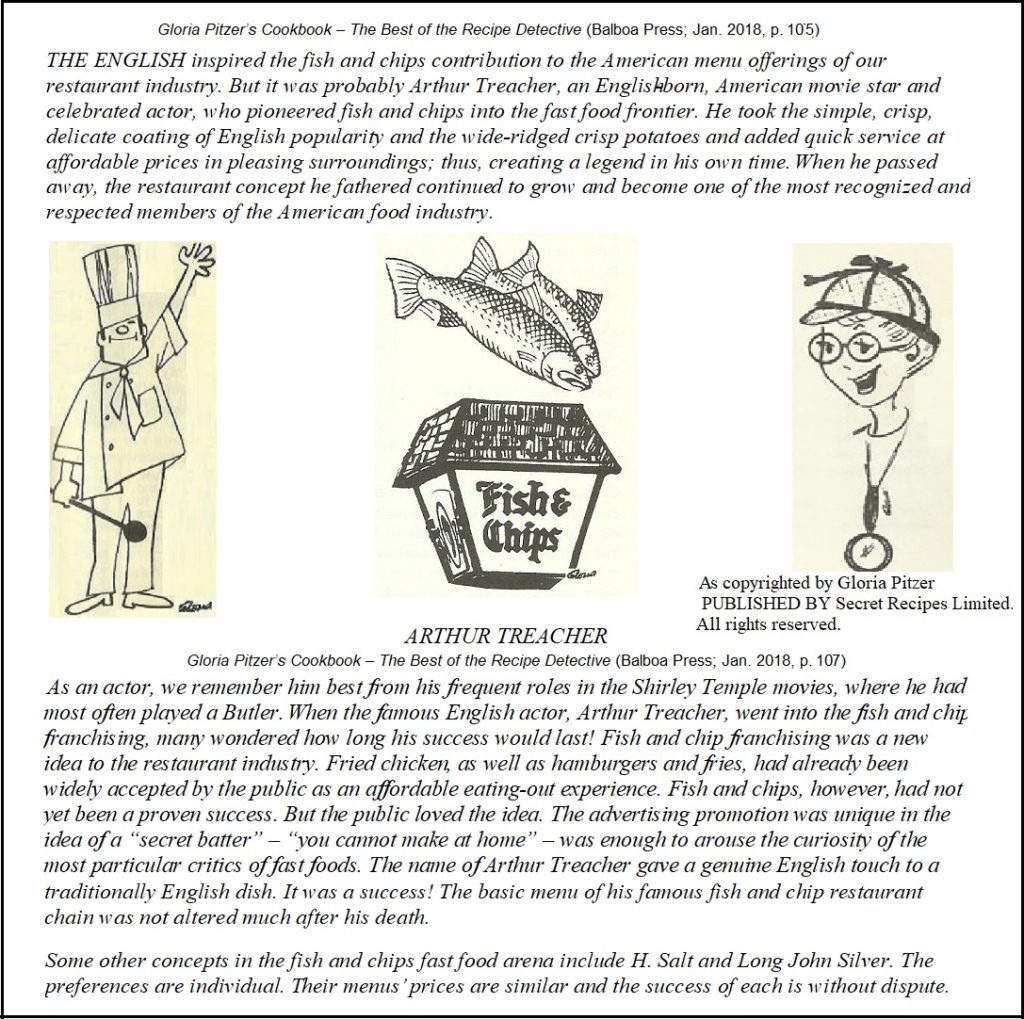

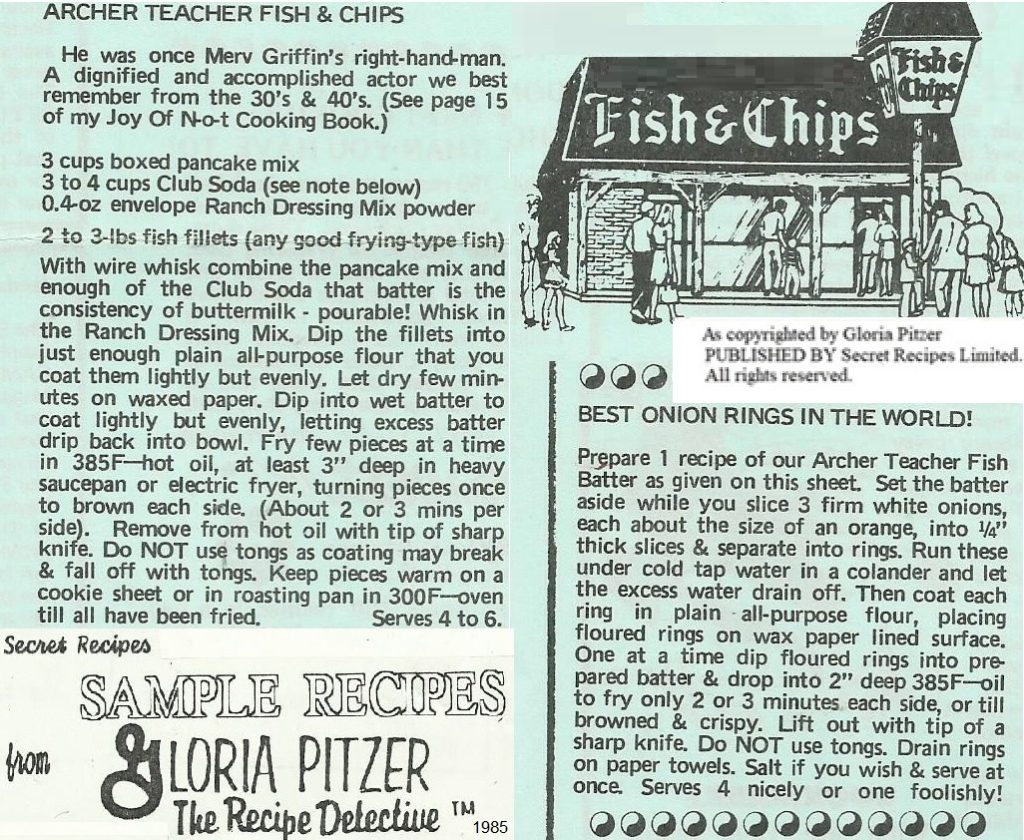
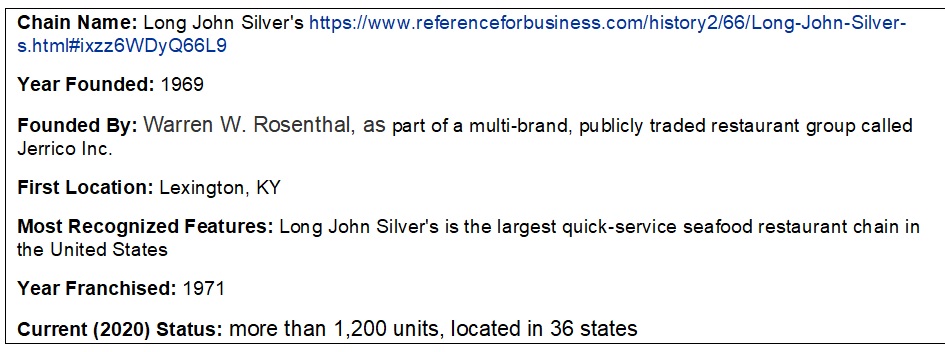
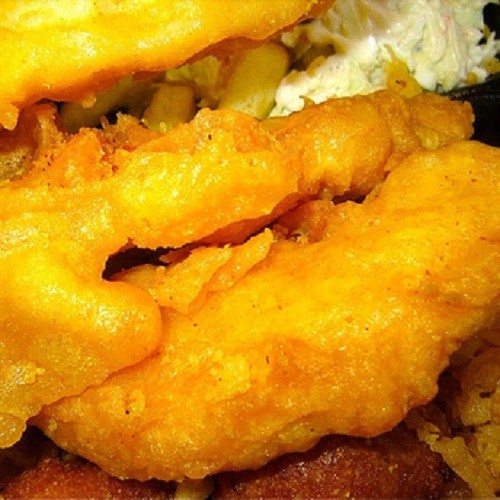
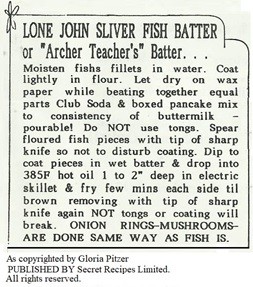

P.S. Food-for-thought until we meet again, next Monday…
Mark your calendar! September 28th, 2020 will be National Good Neighbor Day!


…37 down, 15 to go!


One reply on “Mondays & Memories of My Mom – Where Did All The Good Noshes Go? – Part III”
[…] Mondays & Memories of My Mom – Where Did All The Good Noshes Go? – Part III […]